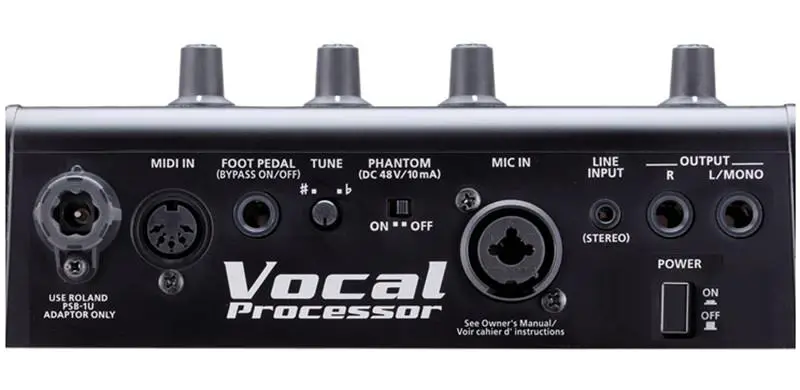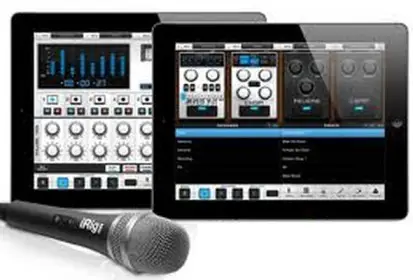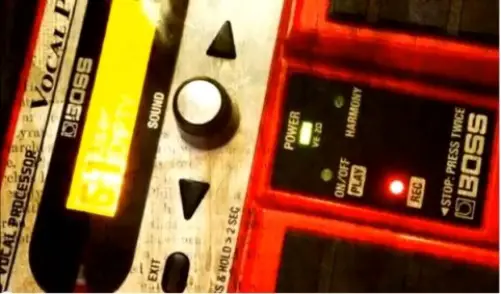
vocal processors and Harmonizers can not only make your vocals sound better (and correct mistakes such as correcting pitch), they can also add interesting effects such as adding background vocalists with pitch-perfect harmonies. Guide to Vocal Effects Software and how it can be used to add various kinds of vocal effects, make enhancements such as remove distracting breaths and so on
Introduction
The voice is a musical instrument in itself, and if other instruments can be made to sound better, why not the voice?
There are so many effects and processors available for instruments such as guitars, keyboards, it only makes sense that these be made available for vocals as well. Every modern recording setup uses vocal processor.
You can choose from a wide range of vocal processors that can manipulate the singer’s voice (make it sound better, add effects), both onstage and in the studio.
You can use these equipment (while performing live on stage or while recording in the studio) to add effects that provide a professional touch to the vocals. You can auto-tune, add multiple harmonies, and other effects using a vocal processor.
Top brands such as Boss, Electro-Harmonix, Roland, TC Helicon, all make vocal processors; just pick up something that has the right set of features for your requirements.
Best Vocal Processors
Here we take a look at the popular vocal processors, available for various prices, that can be used to enhance the quality of a singer’s performance.
Digitech Vocalist Live 3
Layer your voice with natural sounding harmonies. This innovative vocal harmony processor pedal automatically follows your vocal’s chord progression by using patented musIQ technology. With the simple click of a footswitch, the Live 3 will provide you with pitch-perfect backups in your choice of either male or female vocals.
VoiceLive 2 Floor-Based Vocal Processor (TC Helicon)
Offers great versatility and convenience. Smooth algorithm and new reverb options provide better vocals. You can replicate the sound of an angelic choir, add dirty fuzz of garage rock, and do lot more.
VE-20 Vocal Effects Processor (Boss)
This durably built stompbox allows musicians to add layers, loops, harmonies, and other effects to their singing while live on stage.
Tascam TA-1VP
Suitable for more serious applications, the TA-1VP comes with Antares Auto-Tune pitch correction and vocal modelling. The TA-1VP also includes an XLR microphone input, as well as phantom power for condenser mics.
[easyazon_infoblock align=”none” cart=”n” identifier=”B004OA6JU2″ locale=”US” tag=”keytarhq04-20″]
[easyazon_infoblock align=”none” cart=”n” identifier=”B008DRALA6″ locale=”US” tag=”keytarhq04-20″]
[easyazon_infoblock align=”none” cart=”n” identifier=”B003EZXMS0″ locale=”US” tag=”keytarhq04-20″]
Vocal Processors: Buying Guide
 Though setting up a home studio may seem daunting, especially if you’re new to it, with a few equipment you can have a decent setup at home. However, with more experience you will realize that you need more gear for the studio, and a vocal processor is definitely one of them, if you record a lot of vocals.
Though setting up a home studio may seem daunting, especially if you’re new to it, with a few equipment you can have a decent setup at home. However, with more experience you will realize that you need more gear for the studio, and a vocal processor is definitely one of them, if you record a lot of vocals.
Ever wondered how do they produce those weird (alien) sounds you hear on TV / movies? How about the robotic effects heard in songs, how do they record them?
Big budget movies use professional sound engineers who create special voices and sounds, make the sounds more interesting, and they usually have a whole rack of effects gear (hardware as well as software) at their disposal. Same applies for the studio engineers who are recording songs.
Now, even you can alter the volume, change the tempo, add an echo, add some robotic or other weird effects, make the vocal sound more soothing, turn sound backward, or distort sounds.
All this using Vocal Effects Software & processors!
Even singers who do a lot of gigs can use these to their advantage. Almost every song that gets made today uses a vocal processor to fine-tune the vocals.
Using a vocal processors you can add effects like adding a slight gain, adding wild effects, create loops and phases, add multiple-part harmonies (you can use it to accompany you on stage while performing solo).
You can create the best and most aggressive robotic vocal effect in minutes, and learn how to pitch the vocal into various keys along with notes, melodies, chords, or progressions.
You can use your own special blend of effects and techniques to achieve thick doubled/layered sound that can be used for various situations.
Useful Features
Vocal Effects Software include specialized effects for vocalists, including: harmony, double-track, dynamics, reverb, delay, and more.
You can create multi-part harmonies and layers, real-time pitch-correction tools Special FX, including Distortion, Radio and Strobe Phrase Looper, with these Vocal Effects Software.
There are various tips and tricks for processing live vocals with various recording software. You can take advantage of these powerful effects and use them for live vocal performance. This is also for producers who what to know how to route vocals into a DAW and work with the vocoder effect.
Which One to Use
Vocal processors may come in various shapes (builds):
- Long, thin, rack-mounted processors (fits a studio rack along with other effects processors). These are a bit more expensive.
- You also get processors that look like floor pedals. Most musicians prefer foot pedals as they find it convenient (compared to accessing it from a rack mount), and the good pedals are quite sturdily built.
- Then you also get the more compact table-top processors, suited for your home studio. These offer all the features, but are not quite as sturdy as the other two options (used commonly in gigs/tours). These are however a bit cheaper.
You may start with some of the free stuff available to get an idea about vocal effects software. Of course they will definitely lack in features and also will not have the quality that the pro software provide. If you are a guitar player, you may also experiment with some of the the Guitar software that you may already have, as most of them work okay with other acoustic instruments as well as vocals (comes down to what a you’re trying to achieve).
If you are considering buying any specific vocal effects software, be sure to try out the trial version. You’ll get a better idea of the features. The good ones have a whole rack of effects compressed into one user-friendly program.

Closing Thoughts
Vocal processing software is a must if you want your vocal track to sound professional. These are designed work with applications that use a microphone, or to provide effects to prerecorded Wave files, or to treat live vocal recordings.
Take your vocals to the next level with these Vocal Processors (and and Harmonizers).
KeytarHQ editorial team includes musicians who write and review products for pianists, keyboardists, guitarists & other musicians. KeytarHQ is the best online resource for information on keyboards, pianos, synths, keytars, guitars and music gear for musicians of all abilities, ages and interests.



Leave a Reply